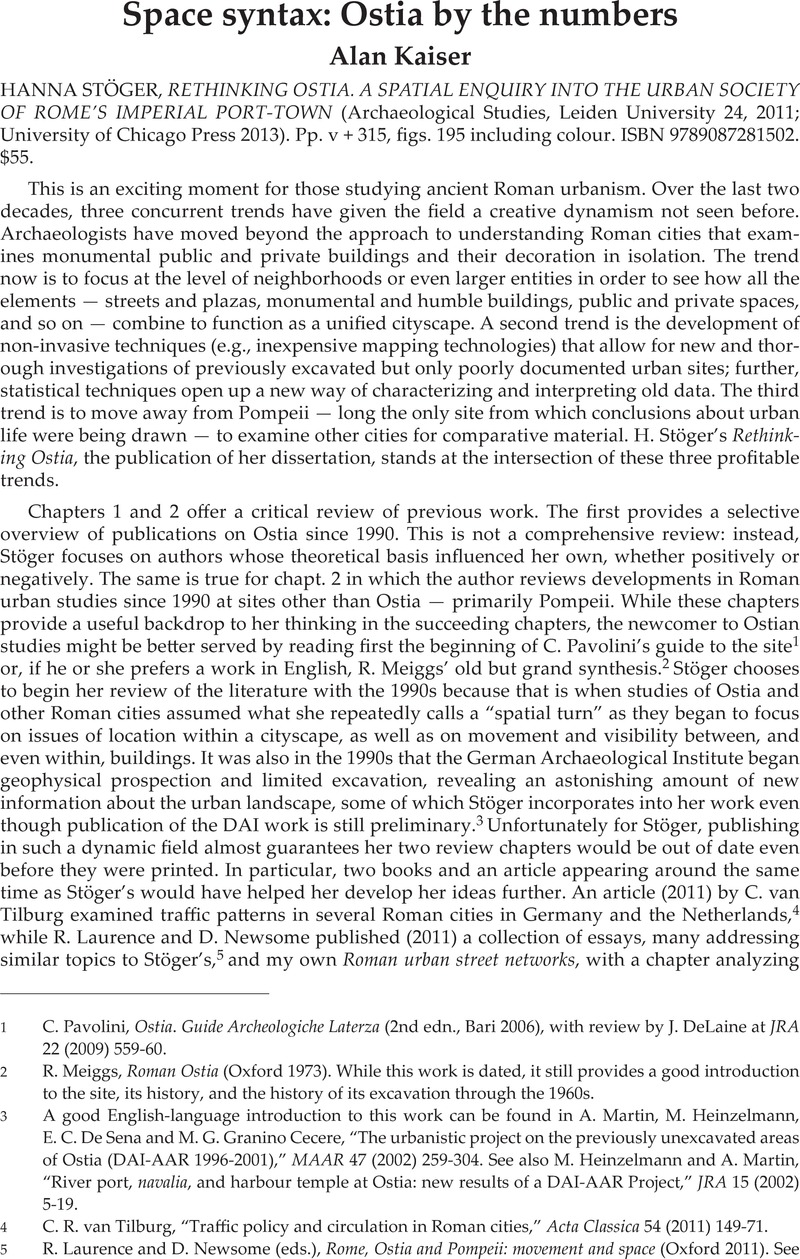No CrossRef data available.
Article contents
Space syntax: Ostia by the numbers - HANNA STÖGER, RETHINKING OSTIA. A SPATIAL ENQUIRY INTO THE URBAN SOCIETY OF ROME'S IMPERIAL PORT-TOWN (Archaeological Studies, Leiden University 24, 2011; University of Chicago Press 2013). Pp. v + 315, figs. 195 including colour. ISBN 9789087281502. $55.
Published online by Cambridge University Press: 27 November 2014
Abstract

- Type
- Reviews
- Information
- Copyright
- Copyright © Journal of Roman Archaeology L.L.C. 2014
References
1 Pavolini, C., Ostia. Guide Archeologiche Laterza (2nd edn., Bari 2006)Google Scholar, with review by DeLaine, J. at JRA 22 (2009) 559–60Google Scholar.
2 Meiggs, R., Roman Ostia (Oxford 1973)Google Scholar. While this work is dated, it still provides a good introduction to the site, its history, and the history of its excavation through the 1960s.
3 A good English-language introduction to this work can be found in Martin, A., Heinzelmann, M., Sena, E. C. De and Cecere, M. G. Granino, “The urbanistic project on the previously unexcavated areas of Ostia (DAI-AAR 1996-2001),” MAAR 47 (2002) 259–304 Google Scholar. See also Heinzelmann, M. and Martin, A., “River port, navalia, and harbour temple at Ostia: new results of a DAI-AAR Project,” JRA 15 (2002) 5–19 Google Scholar.
4 van Tilburg, C. R., “Traffic policy and circulation in Roman cities,” Acta Classica 54 (2011) 149–71Google Scholar.
5 Laurence, R. and Newsome, D. (eds.), Rome, Ostia and Pompeii: movement and space (Oxford 2011)CrossRefGoogle Scholar. See in particular the chapters by A. van Nes, E. Betts, E. Poehler, and E. Macaulay-Lewis in this volume. Stöger also contributed a chapter (“The spatial organization of the movement economy: the analysis of Ostia’s Scholae”), which is an edited version of chapt. 8 in the present book.
6 Hillier, B. and Hanson, J., The social logic of space (Cambridge 1984)CrossRefGoogle Scholar.
7 Lack of documentation and/or publication has indeed been a perennial problem, leading to Ostia's frequent omission from most discussions of Roman urbanism.


